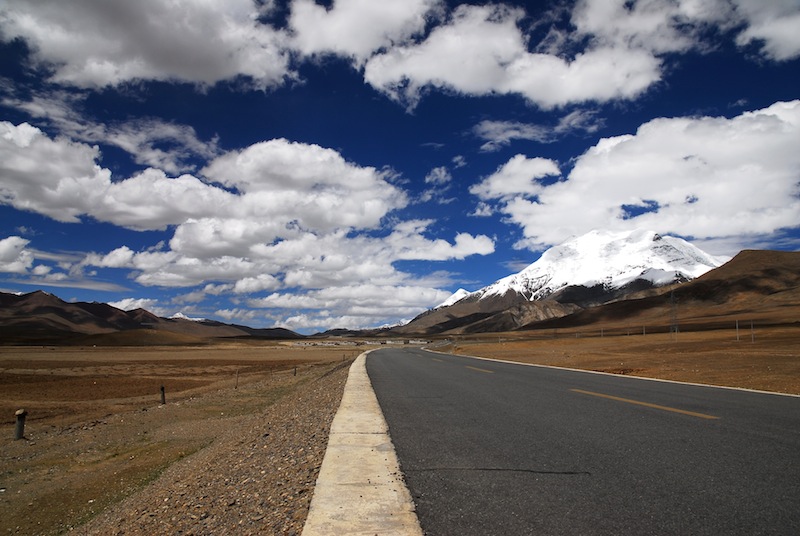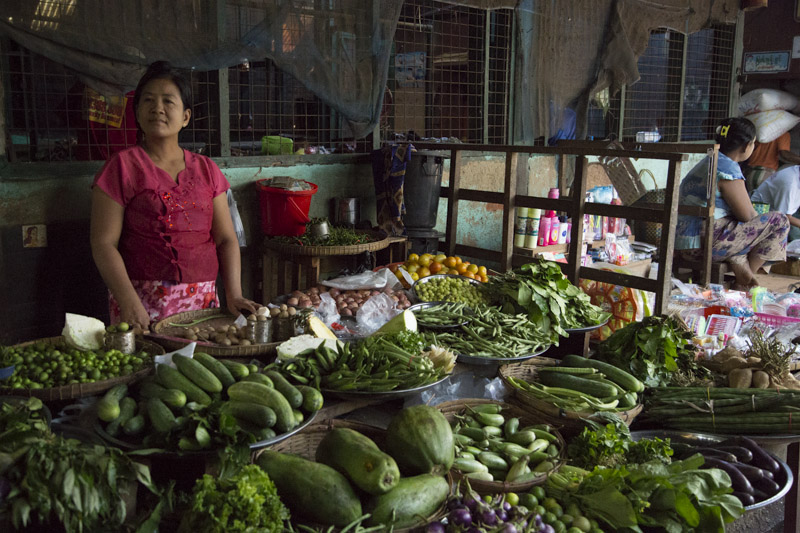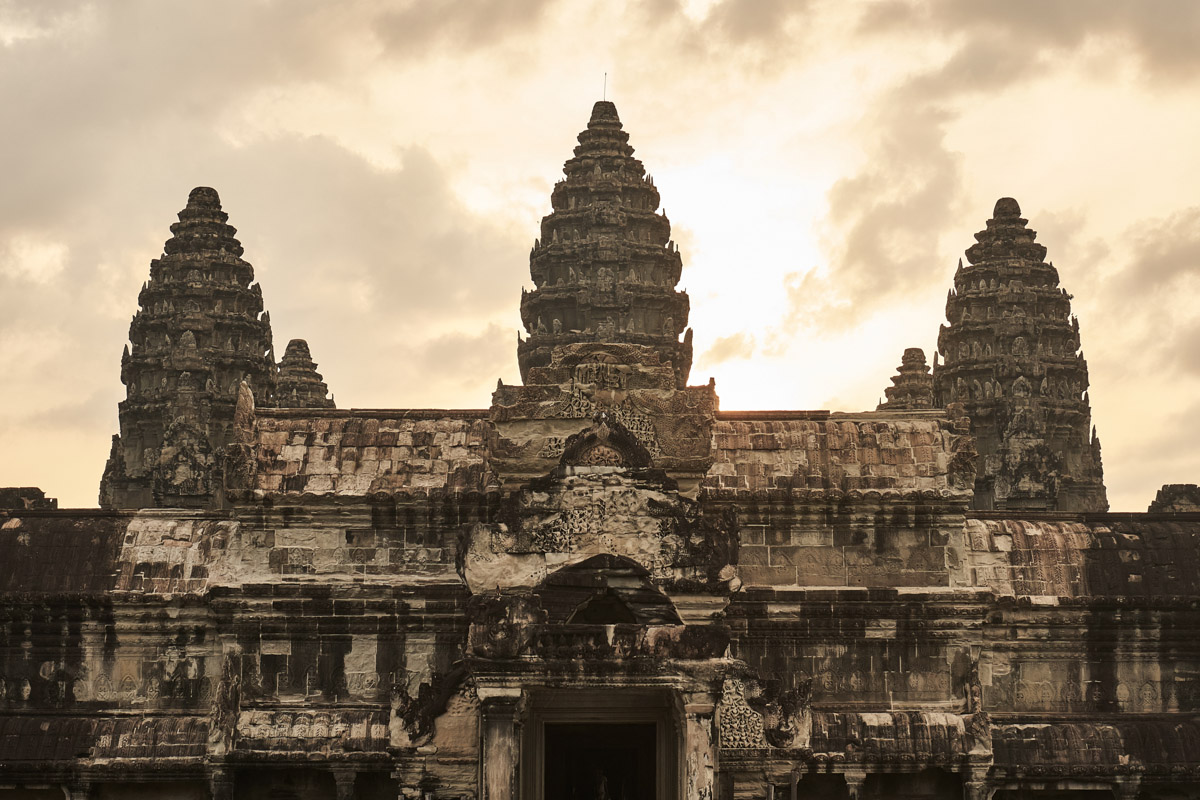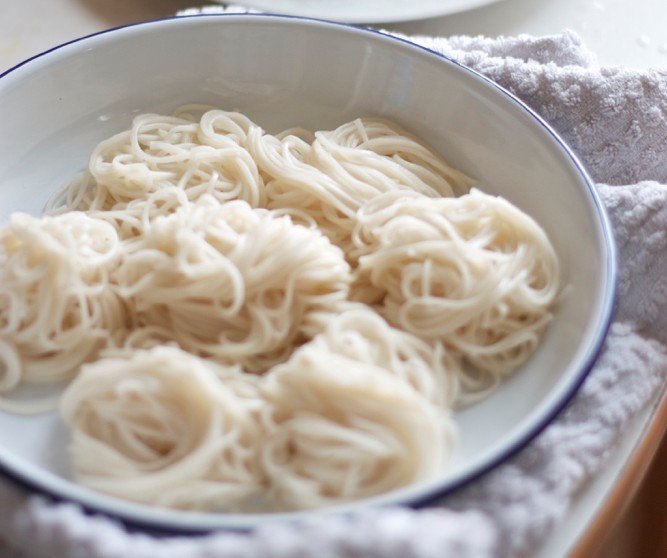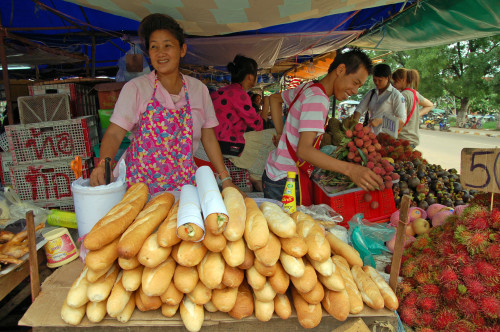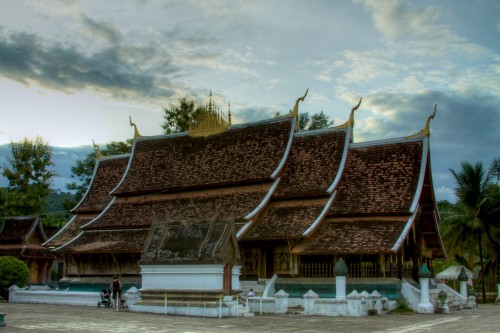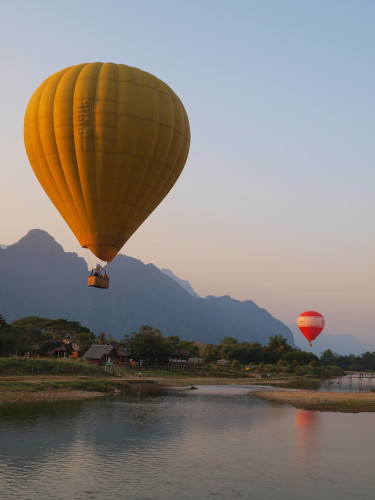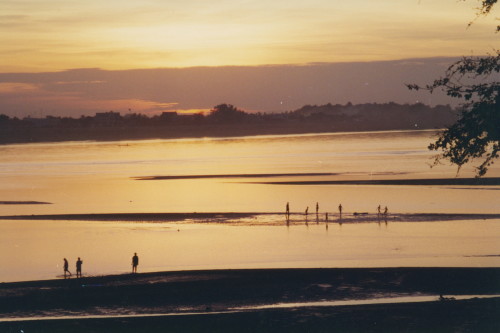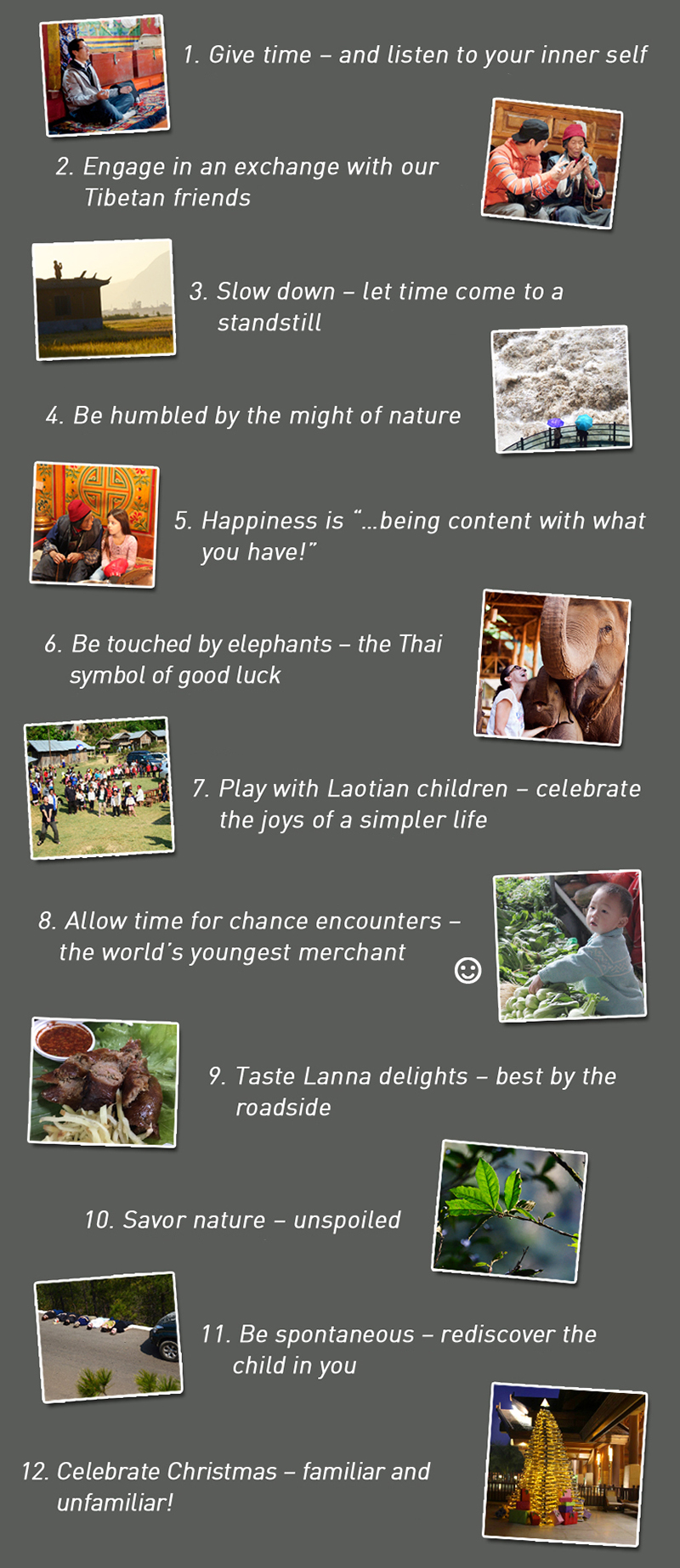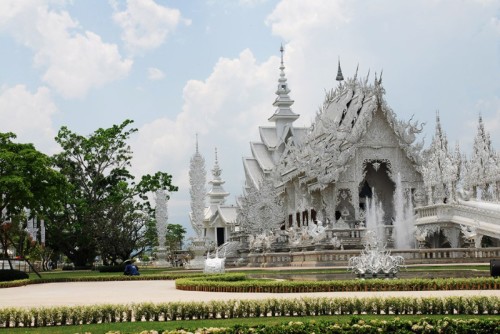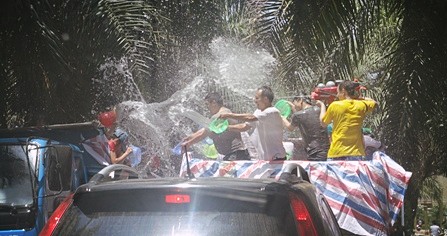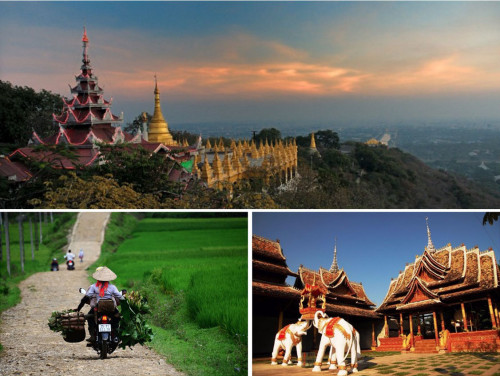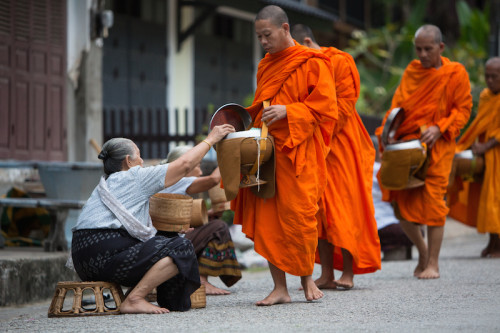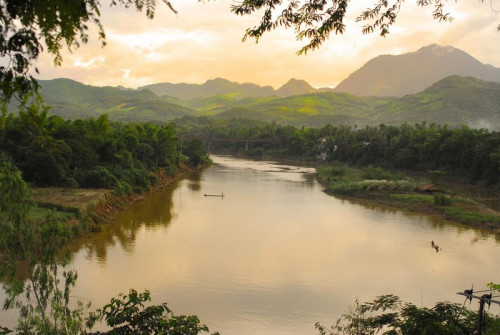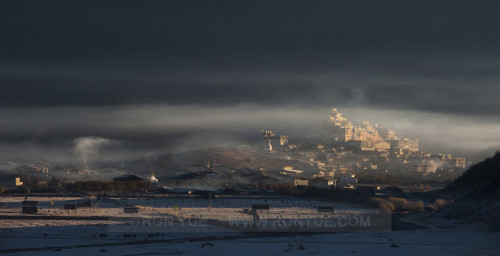Tag Archives: Laos
Posted on 7 Sep, 2018
The Mekong River feeds and waters tens of millions people in six countries. The river is an arterythrough China and South-East Asia, linking the cool, dry austerity of the Tibetan Plateau and its tropical delta.
Jo James take a trip downstream…

Posted on 8 Jun, 2018
Running the gamut from the icy Himalayas to the tropical Golden Triangle, the scenery on our Asian journeys takes some beating. In this week’s story, we share a few wonderful scenic drives in Asia…
Posted on 30 Apr, 2018
Hemmed in by culinary big-hitters, the cuisines of Cambodia, Burma and Laos are little known outside their homelands. This is undeserved, but it does mean that delicious surprises await adventurous diners in each of the three countries…
Posted on 5 Oct, 2017
Mareen takes us on a journey across South-East Asia’s only landlocked country, as she discovers the highways and byways of southern Laos…
Posted on 8 Sep, 2017
In the first of three pieces about her research trip last May, Mareen takes us on a flying trip along her route through Laos and Cambodia…
Posted on 12 May, 2017
Given that the basic ingredients are so similar (noodles, broth, herbs, meat) you’d be forgiven for confusing South-East Asia’s noodles. To do so publicly, however, would be to invite debate, if not argument. Each country and region is downright passionate about its own take on a humble bowl of noodle soup.
Whichever side of this culinary debate you fall on (and this is something that is well-worth researching), one thing the dishes below have in common is that they are simultaneously exotic and comforting, and – most importantly – utterly delicious…
1. Khao Soi from Chiang Mai
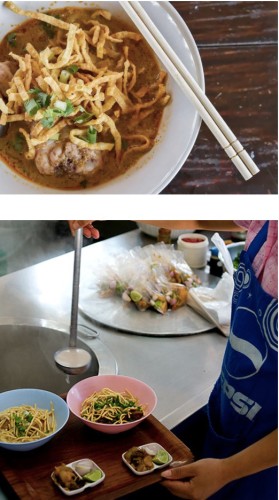 Take a bowl of yellow egg-and-wheat noodles. Add a ladle of thin curry – chicken or beef is traditional, a drizzle of coconut cream, and top with a handful of crunchy deep-fried noodles. Serve with pickles, sliced shallots and wedges of lime, preferably in Chiang Mai. This is the essence of khao soi.
Take a bowl of yellow egg-and-wheat noodles. Add a ladle of thin curry – chicken or beef is traditional, a drizzle of coconut cream, and top with a handful of crunchy deep-fried noodles. Serve with pickles, sliced shallots and wedges of lime, preferably in Chiang Mai. This is the essence of khao soi.
Not to be confused with a totally different Laotian dish of the same name, this is a noodle soup that inspires devotion. Its roots may lie across the border in Burma, but Chiang Mai has adopted khao soi wholeheartedly. The dish is served in simple canteens across the city, with flavours split along broadly religious lines; Halal khao soi joints use a mild curry, while Buddhist-run noodle shops tend to use a much spicier soup.
Once you’ve tasted your first bowl, it’s easy to see why khao soi is one of Chiang Mai’s most famous culinary exports. As chef Andy Ricker puts it, “It’s exotic without being weird and, most important, completely delicious.”
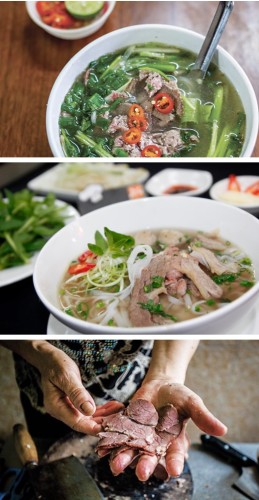 2. Pho Bo from Hanoi
2. Pho Bo from Hanoi
According to an old Vietnamese saying, ask nine people where to get the best pho, and you’ll get 10 different answers. Perhaps the best-known South-East Asian noodle dish after pad thai, Vietnamese pho bo – flat rice noodles served in clear broth and topped with thinly sliced beef brisket and spring onions – are a national obsession. Add a crisp banh quay (deep-fried dough stick) to dunk in the broth, and you have a dish that feels both wholesome and indulgent all at once.
Elsewhere, bowls of pho are served with baskets of fresh herbs, though not in Hanoi, pho bo’s original home. Condiments are sparse too, and limited to garlic vinegar, chillies and – maybe – a wedge of lime. With very little to detract from the flavour of the broth and the cut of the meat, the quality of both is allowed to shine, or not, as the case may be – fortunately, someone’s already done the footwork for you and rounded up the best pho bo spots in Vietnam’s capital.
3. Khao Piak Sen from Luang Prabang
Before dawn each day, noodle shops across Laos fill with the sounds of cooks preparing khao piak. Fresh, thick and round, like Japanese udon but with a little more bounce and bite, these noodles are the core ingredient of khao piak sen.
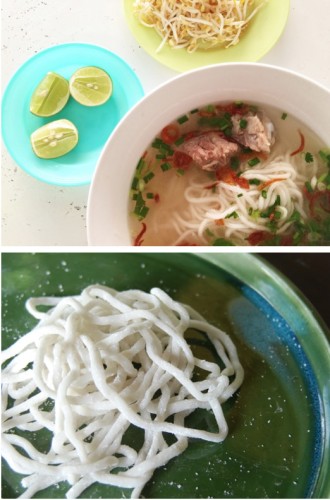 Eaten for breakfast and lunch, khao piak sen is Laotian comfort food – chewy noodles, cooked in chicken broth spiked with with lemongrass, galangal and kaffir lime leaves, topped with juicy poached chicken or pork ribs and deep-fried shallots.
Eaten for breakfast and lunch, khao piak sen is Laotian comfort food – chewy noodles, cooked in chicken broth spiked with with lemongrass, galangal and kaffir lime leaves, topped with juicy poached chicken or pork ribs and deep-fried shallots.
This is just the starting point however. A good soup noodle spot will also serve up a mountain of fresh herbs (mint, sweet basil, sawtooth herb, coriander) and raw vegetables (snake beans, watercress, pea shoots, cabbage, lime wedges and birdseye chillies). Tables also groan under the weight of condiments – you’ll see locals working their way methodically through white pepper, sugar, pickled ginger and garlic, soy sauce, white vinegar, fish sauce, sweet chilli sauce, Maggi seasoning and shrimp paste. By the time you’ve finished, your khao piak sen may look nothing like it did when you started, but that’s no bad thing.
4. Mohinga from Mandalay
Bringing together flavours and ingredients from the Subcontinent, China and South-East Asia, mohinga is an apt metaphor for Burma as a whole. Widely considered the country’s national dish, mohinga is served up in teahouses and sold by street vendors across Burma each morning.
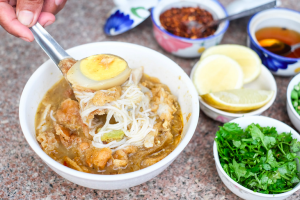 Rice noodles, either thick or thin, are covered in fish broth thickened with chickpea flour, and flavoured with banana blossom, onions, turmeric, lemongrass, garlic and chilli. Toppings add crunch and interest – deep-fried chickpeas, courgette fritters, hard-boiled duck eggs, fresh coriander – making mohinga intensely moreish. Mandalay’s mohinga is less soupy than the Yangon version, leaving more room for those delicious toppings, as well as for a second helping.
Rice noodles, either thick or thin, are covered in fish broth thickened with chickpea flour, and flavoured with banana blossom, onions, turmeric, lemongrass, garlic and chilli. Toppings add crunch and interest – deep-fried chickpeas, courgette fritters, hard-boiled duck eggs, fresh coriander – making mohinga intensely moreish. Mandalay’s mohinga is less soupy than the Yangon version, leaving more room for those delicious toppings, as well as for a second helping.
5. Num Banh Chok from Siem Reap
Cambodia’s quintessential breakfast dish is num banh chok or ‘Khmer noodles’; fresh rice noodles served in a mild fish curry and topped with crisp raw vegetables –cucumber, banana blossom, crunchy water lily stems and fresh mint.
The noodles are made from fermented rice, giving them a slightly tangy flavour, and the curry is flavoured with turmeric – a nod to the long Indian influence that underlies the Khmer language, script and religion. Here in Siem Reap the dish is spiked with more garlic and coconut milk than the original version, and comes with a sweet sauce, tik pha em on the side.
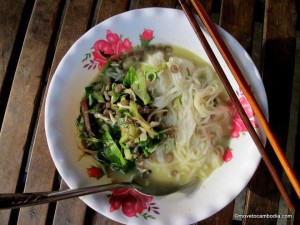 Legend has it that, long ago, a man called Thun Chey was exiled from the Khmer Empire to China. Forced to make a living, he set up a stall selling num banh chok. The dish was so warmly received that Thun Chey was eventually invited to meet the emperor, whom he offended and had him sent back to the Khmers, but not before giving China the inspiration for its own bowls of noodles, which deserve a whole post of their own…
Legend has it that, long ago, a man called Thun Chey was exiled from the Khmer Empire to China. Forced to make a living, he set up a stall selling num banh chok. The dish was so warmly received that Thun Chey was eventually invited to meet the emperor, whom he offended and had him sent back to the Khmers, but not before giving China the inspiration for its own bowls of noodles, which deserve a whole post of their own…
Enjoy Southeast Asia’s Noodles with our cross border journeys…
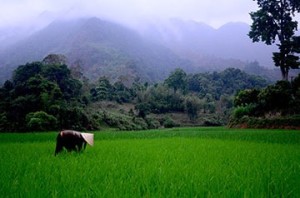 Summit to Sea: From Yunnan to Vietnam will take you on a drive will drive from the edge of Tibet and one UNESCO world heritage town to another right by South China Sea in Vietnam.
Summit to Sea: From Yunnan to Vietnam will take you on a drive will drive from the edge of Tibet and one UNESCO world heritage town to another right by South China Sea in Vietnam.
- 14-day journey
- Kunming – Lijiang – Xizhou – Dianchi Lake – Menglun – Muang La – Dien Bien Phu – Mai Chau – Yen Cat – Dong Hoi – Hue – Hoi An
- Journey Dossier
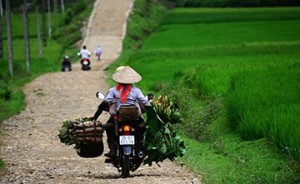 Asian Border Lands: Yunnan, Laos, Vietnam is an exploration of the borderlands of China, Laos and Vietnam where minorities live and trade and coexist as if political borders didn’t exist…
Asian Border Lands: Yunnan, Laos, Vietnam is an exploration of the borderlands of China, Laos and Vietnam where minorities live and trade and coexist as if political borders didn’t exist…
- 10-day journey
- Kunming – Menglun – Xishuangbanna – Muang La – Dien Bien Phu – Ban Doi – Mai Chau
- Journey Dossier
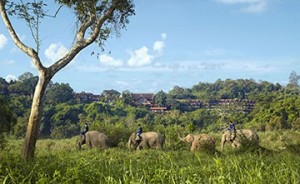 Elephants & Parasols: From Vientiane to the Golden Triangle is a discovery of beautiful landscapes, natural splendor and local culture.
Elephants & Parasols: From Vientiane to the Golden Triangle is a discovery of beautiful landscapes, natural splendor and local culture.
- 9-day journey
- Vientiane – Vang Vieng – Luang Prabang – Muang Xai – Luang Namtha – Chiang Saen – Golden Triangle – Chiang Mai
- Journey Dossier
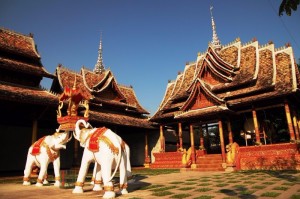 Shangri-La to the Lanna Kingdom will take you from ethnically Tibetan Shangri-La to the tropical heart of the Golden Triangle, then on to Chiang Mai in Thailand – former capital of the ancient Lanna Kingdom.
Shangri-La to the Lanna Kingdom will take you from ethnically Tibetan Shangri-La to the tropical heart of the Golden Triangle, then on to Chiang Mai in Thailand – former capital of the ancient Lanna Kingdom.
- 12-day journey
- Kunming – Lijiang – Xizhou – Xishuangbanna – Luang Namtha – Chiang Sean – Chiang Mai
- Journey Dossier
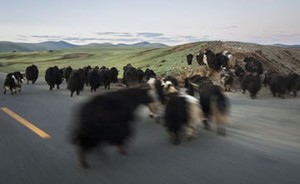 Land of Silk & Snow: Luang Prabang to Lhasa is a discovery of the world’s most stunningly beautiful scenery: From subtropical Laos via Yunnan to the valleys and mountains of the Tibetan Plateau.
Land of Silk & Snow: Luang Prabang to Lhasa is a discovery of the world’s most stunningly beautiful scenery: From subtropical Laos via Yunnan to the valleys and mountains of the Tibetan Plateau.
- 16-day journey
- Luang Prabang – Luang Namtha – Menglun – Lake Dianchi – Xizhou – Lijiang – Shangri-La – Deqin – Markham – Zogang – Rawok – Pomi – Bayi – Lhasa
- Journey Dossier
Posted on 17 Nov, 2016
On my first trip to China I kept hearing rumours about Laos, which at that time – mid-1999 – was still very much off the beaten track.
“The roads are all dirt tracks, and you’ll spend weeks getting rust-red dust out of your hair,” one fellow backpacker told me, knowingly. I had only recently discovered that such a country existed, so these survivors’ stories of epic bus journeys and remote villages combined with my near-absolute ignorance in a way that left me longing to hop over the border and explore.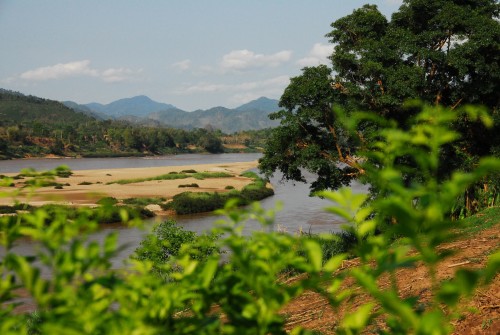
Distracted by university and work, it wasn’t until 2007 that I finally managed to arrange a trip to Laos. Escaping the greyness of a Beijing winter, my husband and I flew to Kunming, caught a bus to Jinghong and took a minibus to the border at Mohan.
We negotiated our exit from China, and took a van across the few hundred metres of “no man’s land” that separates the two border posts. The Lao checkpoint fitted my idea of how it ought to look perfectly; a series of ramshackle huts where sullen officials stamped our passports with an improbable number of rubber stamps.
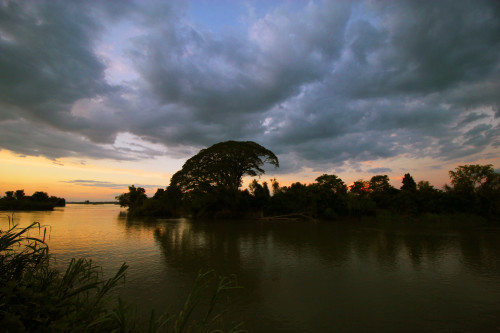 Once finished with the formalities, we clambered into a songthaew (an overgrown tuk-tuk where passengers sit facing each other on two benches inside), and drove off into the afternoon sunshine towards Luang Namtha, giddy with the excitement of being somewhere fresh and new.
Once finished with the formalities, we clambered into a songthaew (an overgrown tuk-tuk where passengers sit facing each other on two benches inside), and drove off into the afternoon sunshine towards Luang Namtha, giddy with the excitement of being somewhere fresh and new.
We spent the next five weeks travelling the length of Laos by bus and songthaew. After the border checkpoint had confirmed my expectations, the rest of the country came as a surprise; more beautiful than I had pictured, less developed than I anticipated, and more fun to explore than I had imagined.
In Luang Namtha we discovered Lao food. In a thatched hut in the rice fields, our hiking guide produced a delicious lunch of herb-filled larb salad and sticky rice all wrapped in banana leaves, a meal that we still talk about to this day. We slurped steaming bowls of rice noodles in a street stall, tried chilli-spiked river fish grilled over an open fire in the night market and breakfasted on baguettes stuffed with cheese and sausage, locally-grown coffee and plates of juicy tropical fruit. Like hobbits, we took to having multiple meals – first and second breakfasts (on one occasion finding space for a third), first and second lunches, dinner and perhaps an evening snack or two.
After travelling through the country’s beautiful, rural north, where villagers’ income seemed to derive from drying grasses to make brooms, we arrived in Luang Prabang one evening to find its colonial villas converted to chic hotels and well-heeled tourists mingling with scruffy backpackers like ourselves in the night market. By day, it was clear to see what had drawn people to this elegant town, its neat grid of streets lined alternately with ornate monasteries and faded Indochinese villas. All this lies nestled amongst forest-clad hills on a tongue of land formed by the confluence of two rivers, the town as blessed by geography as it has been by history.
Father south, the workaday town of Vang Vieng – which grew up around a Vietnam War-era US air strip – had just established itself as a backpackers’ favourite, thanks to its beautiful surroundings and a handful of bars showing Friends on loop. We floated down the Nam Song River in the shadow of jagged limestone karst hills and slept to a chorus of croaking frogs that lived in our hotel’s lily pond.
By the time we reached Vientiane, the monochrome of Beijing’s winter streets was a distant memory. It came as a shock to drive past the country’s only “factory” – a small water bottling plant on the outskirts of the capital – our first brush with anything even remotely industrial since we had left China.
The Laotian capital seemed impossibly small and quiet for a capital city. We cycled along the wide boulevards, dined at the city’s night market and drank Beer Lao as we looked out across the dark waters of the Mekong towards Thailand.
By the time we crossed the border into Thailand a fortnight later – now with survivors’ stories of our own, mostly relating to bus travel – South-East Asia’s only land-locked country had found a place at the top of our list of places to re-visit.
Little did I know that a few years later I would be regularly driving across northern Laos with groups of guests for On the Road. Over the course of many journeys, we’ve seen the Lao infrastructure gradually improve – the shabby border checkpoint has been upgraded and the rickety car ferry that we used to cross the Mekong in Huay Xai has been replaced with a new bridge. Laos is gradually becoming more developed, but, by and large, this is happening in a gentle way – there are no traffic-choked highways or big box shopping malls. The country retains its quiet charm, the Lao people still welcome curious travellers and the food still tastes as good as ever…
On the Road offers several journeys that go through Laos:
- The most in-depth exploration is our all-new “Elephants and Parasols: From Vientiane to the Golden Triangle” itinerary … launching in April 2017!
- Other itineraries that go through northern Laos include:
- “Summit to Sea: From Yunnan to Vietnam“: from the edge of Tibet to the South-China Sea.
- “From Shangri-La to the Lanna Kingdom“: from the edge of Tibet to Chiang Mai in northern Thailand
- “From Yunnan to the Lanna Kingdom“: from Kunming via the UNESCO World Heritage Yuanyang Rice Terraces to northern Thailand
Posted on 23 Sep, 2016
For many of us, the end of the year is a time for taking time off to reflect upon the year past and the year to come. For some of us, it is the time to celebrate Christmas and time for giving. Giving often means the “things”. But we believe the memories of meaningful experiences last longer…
On the way from Shangri-La to Chiang Mai in Thailand, during 12 days, here are 12 gift ideas :
Join the “gift-to-yourself-and-your-family” journey: Over Christmas and New Year!
From Shangri-La to the Lanna Kingdom – December 22, 2016
-
An unforgettable way to close out 2016 and start the new year!
-
Click here for more info
-
In a nutshell
-
What?
-
Travel from Shangri-La in Yunnan via Nothern Lao to Chiang Mai in Thailand
-
Luxury, Comfort and Adventure all in one
-
Christmas in wintry Shangri-La
-
New Year in subtropical Thailand
-
How long? 8 or 12 days
-
-
We look forward to welcoming you on what will be one of the most memorable journeys of your life!
Posted on 6 Sep, 2016
We hope you had enjoyable summer months. For us, July and August were incredibly busy, not so much because of journeys, but because preparations for 2017 are in full swing! Here’s what we’ve been up to and what you can expect to come.
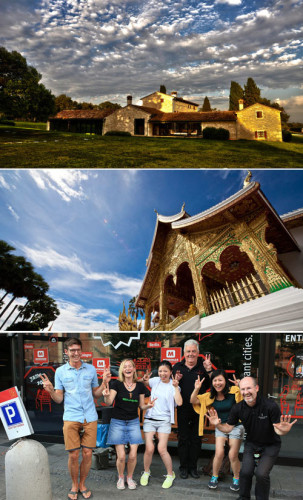 Looking back…
Looking back…
Over the summer, we published some fun reading on our Detours blog:
What a Day?! – Here is a story about a very special day on my most recent research trip in Europe
· Part 1: A holiday? Not exactly…
· Part 2: Impatient to be free…
· Part 3: I know one when I see one…
Jo has written a story about traveling from Luang Prabang in Lao to Lhasa in Tibet…a route that lies at the heart of our new, 2017 “Lands of Silk and Snow” journey (see below).
And Mareen published a story about a day in her life working at On the Road.
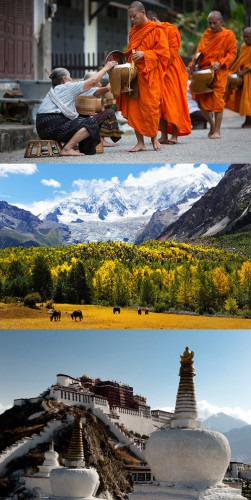 Looking forward…
Looking forward…
In September, we will be announcing two entirely new journeys for 2017.
From Lao to Tibet…
First out of the gate will be “Lands of Silk and Snow: From Luang Prabang to Lhasa”, our entirely new journey to Tibet. Imagine driving from the lush rain forests of Lao to the stupendous mountains of Tibet, from a culture inspired by one form of Buddhism to that inspired by another. For this magical journey you need 16 days, but you can shorten it to 12 days if you skip the Lao portion.
On the other hand, if you want to make it into the journey of a lifetime, then add Roads on the Roof of the World at the end to drive all the way to the Mt. Everest Base Camp. Driving tours don’t get any better than this in Asia!
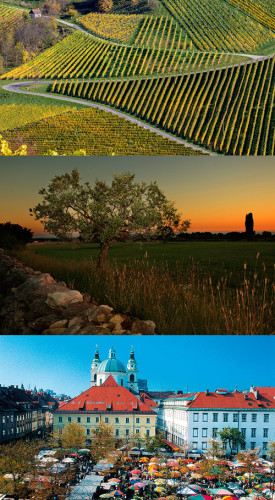 Austrian Hungarian Lands: Vienna, the Adriatic, the Alps and Prague
Austrian Hungarian Lands: Vienna, the Adriatic, the Alps and Prague
And then comes a milestone for us. After several private group journeys in Europe, here we are with our first scheduled European journey you can join in spring or autumn 2017.
If you would like to
· spoil yourself with beautiful hotels,
· eat fine meals (not always Michelin star, but the best these regions have to offer the way “mom used to cook it”),
· drive on some of the world most beautiful roads and
· immerse yourself in the landscapes and cultures of Austria, Slovenia, Croatia and the Czech Republic, there is no better journey in the world.
Travel Inspirations for the coming months…
From now until February, here are some border-crossing journey ideas for you:
-
A Burma Journey: From the Golden Triangle to the Bay of Bengal
-
Drive on back roads through this country that was frozen in time but is now undergoing rapid change…
-
November 9 and February 12
-
-
Asian Border Lands
-
Drive from Yunnan via Lao to northern Vietnam…and experience a region rich in different minority cultures…
-
November 4
-
-
A Christmas Treat: From Shangri-La to the Lanna Kingdom
-
Our flagship Asian journey from the edge of Tibet to Chiang Mai in northern Thailand is even better at Christmas and New Year.
-
It is beautiful as a family adventure, too, a journey that will be unforgettable for you and your children
-
December 22
-
All the best from On the Road Experiences for the lovely month of September!
Posted on 25 Aug, 2016
Early each morning, monks file out from the wats that line Luang Prabang’s loose grid of streets. Clasping their alms bowls, they walk, solemn and barefoot, along streets fringed with shaggy toddy palms, and past candy-coloured colonial villas and gilded temples.
Temperatures climb throughout the day, and most people retreat to the shade to sip cooling drinks and doze before venturing out again at dusk, when a vibrant night market sets up on Sisavangvong Road. Here, stallholders sell souvenirs and shake out bright silk scarves under bluish fluorescent lights as the sun sinks behind far bank of the Mekong.
As you leave Luang Prabang and set out on the road to the Chinese border, the drive punctuated by roadside villages thronging with children, any change seems faint. Three hundred kilometres away, Luang Namtha is clearly cut from the same languid, tropical cloth. Even just across the Chinese border in Xishuangbanna, people believe the same form of Buddhism, practice the same rituals, share the same traditional dress and enjoy very similar spicy-sour flavours in their food.
From Xishuangbanna, where the route of our journey Lands of Silk and Snow briefly reunites with the Mekong, the road climbs up out of the steamy basin where elephants and peacocks once strutted through the jungle, and onto the Yunnan-Guizhou Plateau. As you ascend, the air temperature drops and dries, and the vegetation changes; rubber trees and banana plantations fall away to be replaced by temperate forest and – as we approach Kunming, “the City of Eternal Spring” – fields of flowers.
North of Kunming, the pace of change picks up as you continue to climb up, past Dali and Lijiang to Shangri-La, the threshold of Tibet. From here to Lhasa our route takes us from the dramatic valleys that mark the Tibetan Plateau’s eastern fringe, crossing the Mekong again – and the Yangtze and the Salween – climbing over snow-dusted passes and swooping down through thickly forested valleys before spilling out into the broad Kyi-Chu valley on the final approach to Lhasa.
It is only by travelling overland that you can see how one land merges into the next; how the continuity of the tropics suddenly disappears as one ascends the 1500 metres between Jinghong and Kunming; how the long parallel valleys that run through northwestern Yunnan have given rise to dozens of ethnic groups and amazing biodiversity; and how Tibetan culture has overcome quite awesome geographical challenges in order to spread from Yunnan to the edge of Central Asia.
And yet while there’s change, there are also elements that bind the entire route together. From Laos to Lhasa the main religion is Buddhism – albeit of different schools. Everywhere between Dali and Luang Prabang was once part of a single kingdom in the eighth century. And the waters of the Mekong gather our journey together at several points, like a purse-string, as we travel from South-East Asia, where its waters flow, brown and stately, up to the heights of Tibet where the young river tumbles wildly out of the hills.
Pity the poor traveller who flies over all this! In our busy times of direct flights and high-speed trains, it truly is a luxury to experience a long-distance overland journey, and to see a portion of the earth’s surface up close and personal, and to meet people along your route, at every turn learning that for all that separates us, there is as much that binds us together.
